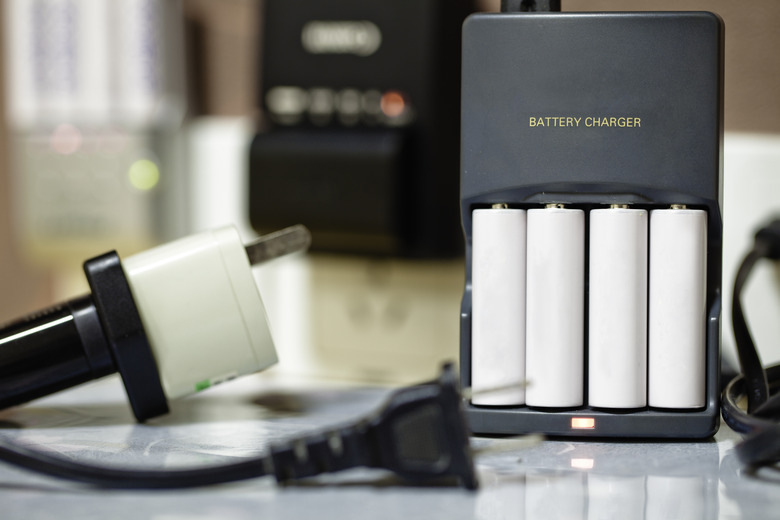How To Revive Lithium Ion Batteries
Lithium-ion batteries , also known as Li-on batteries, are rechargeable batteries, making them a good choice for all types of electronic devices, from laptops to camcorders. The advantages of lithium-ion batteries over NiCad batteries and NiMH batteries are higher capacity, lower self discharge and a higher number of charge cycles before problems develop. Before you dispose of a lithium-ion battery that appears to have died, try bringing it back to life first.
Things Needed
- Safety Glasses
- Voltmeter
- Lithium-ion battery charger with a "wake up," "recovery" or "boost" feature
1. Read the Voltage
Turn off the power source to the appliance containing your battery and remove the battery. Take a voltage reading with your voltmeter. Lithium-ion batteries may go into sleep mode if you drain the battery too much. For example if your battery is rated at 3.7 volts and the voltmeter only shows 1.5 V, it may be in sleep mode.
2. Connect to an Appropriate Charger
Some battery chargers and analyzers have a "wake up," "recovery" or "boost" feature designed to wake a sleeping battery. This isn't always successful, and you shouldn't attempt it with batteries that have been below 1.5 V for over a week, but sometimes it will revive the battery. Insert your battery, taking care to insert it in the correct polarity.
3. Check the Battery After a Minute
Take another voltage reading of the battery around a minute after being on "wake up," or alternatively check your charger's manual to see when the process should be complete. Remember that sometimes reviving a battery will not work, so you might just have to buy a new battery if this isn't successful.
4. Charge and Discharge the Battery
Return the battery into the lithium-ion charger and give it a full charge, which should take around 3 hours depending on what type of Li-ion battery you are reconditioning. Some chargers automatically progress from recovery mode to charging, so on these devices you can just leave the battery in place throughout. Next, discharge the Li-ion battery again in a device that is going to put a heavy load on the battery, like an LED flashlight.
5. Freeze the Battery
Seal the Li-ion battery in an airtight bag and put it in the freezer for about 24 hours, ensuring there is no moisture in the bag that could get the battery wet. When you take it out of the freezer, let it thaw for up to eight hours to restore it to room temperature.
6. Charge the Battery
Place the Li-ion battery in the charger and charge it fully. Hopefully, its performance will improve, it will take a charge again and last longer between charge cycles.
TL;DR (Too Long; Didn't Read)
To prolong the lifespan of your Li-ion battery, always store it at room temperature or colder.
If you have a discharged Li-ion battery, charge it as soon as possible.
Charge your Li-ion battery often (even if they aren't fully discharged) to help improve its lifespan.
Warning
The electrolyte inside a Li-ion battery is flammable and the cell itself pressurized. Always wear safety glasses when working with batteries.
Cite This Article
MLA
Gillespie, Claire. "How To Revive Lithium Ion Batteries" sciencing.com, https://www.sciencing.com/revive-lithium-ion-batteries-5982537/. 25 July 2019.
APA
Gillespie, Claire. (2019, July 25). How To Revive Lithium Ion Batteries. sciencing.com. Retrieved from https://www.sciencing.com/revive-lithium-ion-batteries-5982537/
Chicago
Gillespie, Claire. How To Revive Lithium Ion Batteries last modified March 24, 2022. https://www.sciencing.com/revive-lithium-ion-batteries-5982537/
